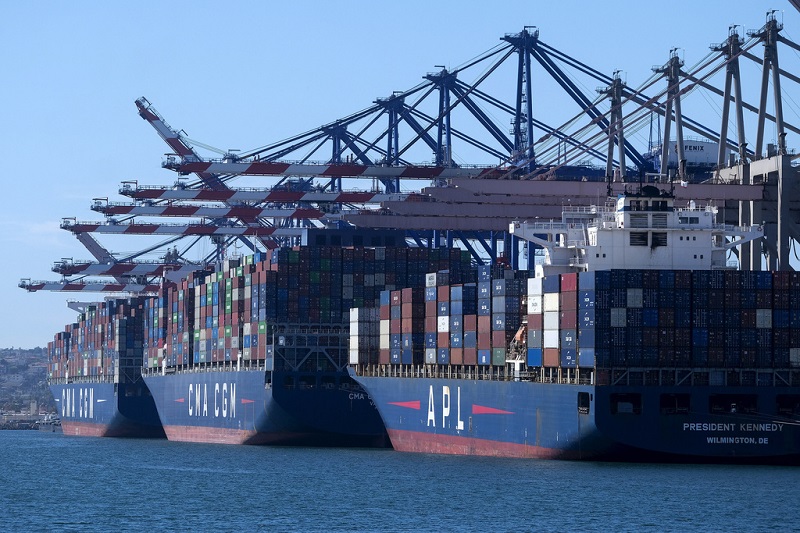Long -term impacts support analysts
Container and vehicle transportation ships will – in the long run – be the largest losers to the duties announced by US President Donald Trump, affecting about 60 countries and are expected to lead to a reduction in imports in the US due to low demand.
According to analysts, the containers market will not react immediately to duties, as most shipping companies will take time to adjust ships to supply chains, retrieve missions or change strategies by adjusting capacity. This is also supported by the Xeneta Research and Analysis Company, which does not expect the cost of maritime transport at present.
Peter Sand, chief of Xeneta analyst – the maritime freight information platform – said that “many American loaders are precisely at the point of agreeing new long -term maritime containers that will enter into force on May 1, They should choose. “
“We do not expect significant upward pressures on marine container rates,” he said, adding that carriers have promoted on -the -spot increases in the Far East to the US on April 1st, but they are unlikely to be maintained as they come from the new market. in March.
The decrease in demand in February and March is partly due to increased volume in January during increased demand before the Lunar New Year, but also because loaders relax from frontloading (expert speeding to prevent an expected disturbance). He stressed that “as soon as the situation with the invoices becomes clearer and loaders are beginning to differentiate supply chains in different areas, it is likely to see sea disorder and upward pressures on fare prices, but this may be a little further away.”
Average spots charter of containers Ship from the Far East increased by 8% to the US east coast and by 15% to the US western coast on April 1st, but have decreased by 43% and 49% from January 1 respectively.
Containers
At the same time, the Pacific Commercial Strip sees a week to week a volatility at the prices of the spot of containers due to recent ship cancellations and the duties announced by Trump.
According to Drewry’s container index, Shanghai fare to Los Angeles increased by $ 10% or $ 239 to $ 2,726 per 40 -foot container and Shanghai fare to New York by $ 8% or $ 272 at $ 3,894 per 40.
In contrast, Spot prices from Rotterdam to Shanghai decreased by $ 7% or $ 34 to $ 466 per 40ft container and those from Shanghai to Genoa decreased by $ 4% or $ 140 to $ 3,031 per 40ft container.
Prices from Shanghai to Rotterdam dropped by $ 3% or $ 66 to $ 2,304 per 40ft container, while prices from New York to Rotterdam and from Rotterdam to New York decreased by $ 2% to $ 831 and $ 2,124 per container 40. Prices from Los Angeles to Shanghai fell by $ 1% or $ 4 to $ 705 per 40ft container.
Drewry’s global container increased by $ 2% to $ 2.208 per 40 -foot container this week, 79% below the previous $ 10,377 pandemic in September 2021.
However, the index was 55% higher than the $ 1,420 average in 2019 (before the pandemic).
Car import duties exacerbate the problems of sea carriers
The US government has confirmed the 25% duty implementation on all foreign -construction cars, which is expected to add more pressure to the prices of marine car carriers, which have come from long high levels in recent months.
At the same time, it was confirmed that 25% duties would also apply to imported car spare parts, with power earlier since May, which is expected to have a particular impact on container markets. According to Reuters, total US vehicles and components imports, without the value of car computers, were $ 459.6 billion.
The announcement of these tariffs on vehicles led to an increase of 22% annually to the EU vehicles in February. to the US in February, while those from Japan increased by 14%. Shipments from South Korea to North America also increased by 15%.
According to Reuters, Stian Omli, vice president of Esgian, a car carrier monitoring platform, said there was a “remarkable increase” of ships directed by Europe to the US.
A total of 33 so -called roll on, roll off ships – designed for wheeled cargo and carrying mainly new cars – have left Europe for the US in February this year, as the ESGIAN data analysis company points out, which monitors shipping and ports worldwide.
However, conflicts about duties are coming as seagoing shipping is at greater potential risk than a separate Trump plan to impose a high approach to US ports on ships built in China.
The opponents of this proposal say it could decorate the domestic exporters of agriculture and energy that Trump promised to support.
They also warn that it could rekindle chaos at pandemic levels in ports outside the US, prompting ships to be avoided in this way US charges






